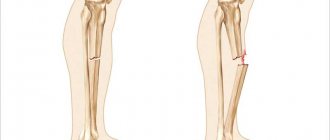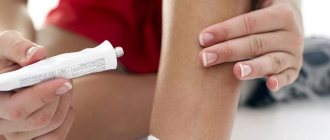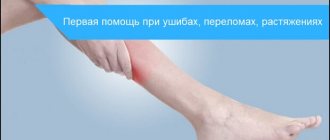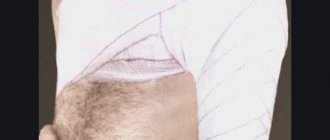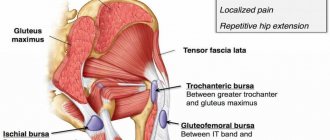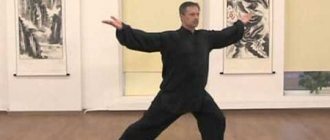In the movies, such trauma is easily dealt with. One push - and the hero rushes to new victories, forgetting about pain. This fiction of the screenwriters has nothing to do with reality. Never try to straighten a dislocated joint yourself. Contact your doctor, the sooner the better. Help with a dislocation in Krasnoyarsk is provided in the rehabilitation center.
The appointment is conducted by traumatologists
Denis Ivanovich Burmakin - Deputy Director for Medical Affairs, orthopedic traumatologist. Extensive experience in emergency traumatology, pediatric orthopedics, and rehabilitation after injuries.
Ask a question Read more...
Bryukhanov Anatoly Valentinovich - microsurgeon.
Ask a question Read more...
Bryukhanov Vladimir Innokentievich - traumatologist-orthopedist, highest qualification category, Honored Doctor of the Russian Federation, work experience of more than 35 years.
Ask a question Read more...
Zotov Vyacheslav Viktorovich - orthopedic traumatologist.
Ask a question Read more...
Pospelov Yuri Vladimirovich - orthopedic traumatologist.
Ask a question Read more...
Klimov Vladimir Aleksandrovich - orthopedic traumatologist. Operating traumatologist-orthopedist.
Ask a question Read more...
Dmitry Anatolyevich Shcherbovich - orthopedic traumatologist, chiropractor, physiotherapist, first medical category, 13 years of work experience. Head of the rehabilitation department.
Ask a question Read more...
Symptoms of a dislocated joint
A joint dislocation is a displacement of the articular surface of the bones, accompanied by damage to the capsular-ligamentous apparatus.
Dislocation occurs, as a rule, with damage to the soft tissues of the joint. In this case, ligaments with blood vessels, the capsule, and the tendons of adjacent muscles may tear. Damage leads to serious impairment of the functionality of a single joint or the entire limb. It should be noted that correct and timely provision of first aid for joint dislocations is of great importance for the full restoration of function. Types of dislocations:
- by degree of displacement (complete and incomplete dislocation);
- by origin (congenital and acquired);
- open dislocations with the formation of a wound;
- closed without tearing the tissue and skin over the joint.
Read on to learn more about the symptoms of a dislocated joint.
2. Dislocations of the wrist and elbow joint
Dislocated wrist
A sprained wrist is the most common type of sprain. Most often it occurs during a fall, when a person, defending himself, lands on his outstretched arm. Characterized by acute pain. The wrist joints are one of the weakest joints, making them very easy to dislocate.
Elbow dislocation
An elbow dislocation can also result from a bad fall. When the elbow is dislocated, swelling and deformation of the joint can be observed. Dislocation is accompanied by limited motor function and acute pain.
Visit our Traumatology and Orthopedics page
Types of joint dislocations
Dislocation of the shoulder joint. Depending on which direction the head of the humerus is displaced, the damage may be inferior, posterior, or anterior. The latter occurs in 98% of cases. Pain with any attempt to move the joint, swelling, decreased joint mobility, impaired sensitivity and blood supply are the main symptoms of this condition. Shoulder dislocation should only be treated by a specialist.
The causes of a dislocated knee joint can be a strong blow, a fall from a height, congenital anomalies, and a sharp contraction of the thigh muscle during fast walking. Symptoms of such damage will include pain, swelling, numbness of the limb, changes in the shape of the knee, a specific position of the leg and the inability to move. Since the injury is considered serious, first aid, treatment and rehabilitation after a dislocated knee joint should be supervised by a doctor.
Dislocation of the hip joint can be anterior or posterior. The front one may appear as a result of a fall from a height. The cause of the rear is most often a road traffic injury. Symptoms of injury include severe pain, forced positioning of the limb, changes in joint shape, and slight shortening of the affected limb. Dislocation of the hip joint in newborns will be discussed below.
Dislocation. How to help and not harm
A joint dislocation is a closed injury that can easily be caused by an unsuccessful fall, a strong jerk, or even a sudden movement. In this case, partial or complete displacement of the bones of the joint occurs. The most vulnerable are the shoulder and jaw joints, the joints of the fingers, and, less commonly, the elbow and hip joints. Dislocation can be complicated by damage to tendons, muscles, blood vessels, nerve endings and bone.
Based on the symptoms, a joint dislocation can often be mistaken for a closed bone fracture. However, injuries have distinctive features. They must be taken into account, since the algorithm for providing pre-medical care to the victim depends on it. Our permanent expert, head of the traumatology department of the 2nd Central District Clinic of the Frunzensky District of Minsk, Viktor Komar , told us how to distinguish a dislocation from a fracture and how to correctly provide first aid.
Symptoms of dislocation
The main signs of a joint dislocation are in many ways similar to the general symptoms of a fracture:
- sharp severe pain;
- deformation, unnatural position of the limb specifically in the joint area;
- severe restriction of movements;
- swelling, edema, redness or, conversely, excessive pallor of the skin in the area of the damaged joint are possible.
Note:
With a fracture, the limb can maintain normal motor activity in the joint. When a dislocation occurs, the movements in the joint are characterized as rocking , while the joint itself remains motionless. This explains one of the distinctive signs of dislocation: forced position of the limb . That is, it is not possible to return an arm or leg to its natural position due to the immobility of the joint.
Another feature characteristic of a joint dislocation: the absence of crepitus (crunching) in the area of injury. Immediately at the moment of dislocation, the so-called clicking symptom . But most often, against the background of severe pain and discomfort, it goes unnoticed.
Viktor Komar , head of the traumatology department of the 2nd Central District Clinic of the Frunzensky District of Minsk:
– Previously, the cheek symptom was used as one of the diagnostic methods for dysplasia (underdevelopment of joints). But if you suspect a dislocation, I strongly recommend that you refrain from such self-diagnosis: this greatly increases the risk of injury to the joint and surrounding tissues.
First aid for sprain
The rules of first aid for a dislocation do not imply any active measures, the expert emphasizes. Basic assistance can only be provided by qualified traumatologists or surgeons in a hospital setting.
What can be done before the ambulance arrives:
- provide complete rest ;
- fix the limb : apply a splint or bandage. Moreover, it is necessary to fix the limb in a position convenient for the victim . That is, if your jaw is dislocated, you should not try to forcefully close your mouth (except for the fact that it is often physically impossible to do this; such actions cause severe pain in the victim). If, say, a hand lowered down causes less discomfort to the victim, it should be left in this position and not try to be raised to tie it on a “scarf.” If it is convenient to bend your elbow and make a scarf bandage, then you need to do just that. You can tie your hand using a wide bandage or improvised means: a scarf, a shirt, a piece of fabric;
- apply cold to the joint area, after wrapping it with a cloth.
Under no circumstances should you correct a dislocation yourself!
Viktor Komar , head of the traumatology department of the 2nd Central District Clinic of the Frunzensky District of Minsk:
– Let me emphasize: the symptoms of a dislocation and a fracture are largely similar. In some cases, a dislocation can only be reliably diagnosed using radiography. At the same time, self-reduction of a dislocation is fraught with even greater damage to the joint and surrounding tissues, tendons, blood vessels, and nerves. The long-term consequences of such “help” can be chronic pain and limited mobility in the affected joint. Reduction should occur under local or general anesthesia, when the muscles are completely relaxed. In addition, there are many methods for reducing a dislocation, depending on which joint is damaged. That is why such manipulations should be performed only in a clinic and only by qualified specialists.
It is important to remember: a dislocation is an injury that does not go away or “heal” on its own. The main principle of first aid is that the sooner you see a doctor, the less likely there are complications and long-term negative consequences.
Subscribe to groups on Facebook, and stay up to date with the latest news! Only interesting videos on our YouTube channel, join us!
Diagnostics
After examining and palpating the damaged area, the traumatologist (namely, he deals with such injuries, including congenital dislocations of joints) will refer the patient for an x-ray. After confirming the diagnosis, the doctor can provide full specialized assistance, starting from eliminating the dislocation and ending with the necessary immobilization or fixation, supplemented, if necessary, with medication and restorative treatment. At the end of the immobilization period, a rehabilitation program is prescribed to restore movements and predict the outcome of treatment.
Providing first aid for dislocated joints
The main task of first aid is to completely immobilize the damaged joint in a position of minimal pain (splinting, bandaging to the body/limb, tight bandage, etc.). If there is damage to the skin in the area of injury, it must be treated with hydrogen peroxide and a clean (ideally sterile) bandage applied or the wound bandaged with a bandage. To reduce swelling, apply a cold compress to the joint. It is not recommended to give the victim water or painkillers in the form of tablets in most cases (the measures described above will in most cases be sufficient until the ambulance arrives) to assist in eliminating the dislocation in a medical facility as soon as possible, the main condition of which is the injured person’s empty stomach.
You cannot correct a dislocation on your own!
Treatment
First aid for a dislocation is to move the displaced joint into the correct position. The procedure is quite painful, so it is performed under anesthesia. Once the joint is returned to its correct position, a cast is applied to stabilize it.
After the main correction, conservative treatment is prescribed:
- health-improving gymnastics that restores mobility to the joint;
- therapeutic massage to stimulate metabolic processes in tissues;
- acupuncture sessions to speed up recovery.
In case of severe injuries, dislocation is treated only through surgery. In this case, it is important to pay attention to the presence of any chronic diseases that provoke incorrect position of the joint, for example, pathology of bone or cartilage tissue. After surgery, a plaster cast is applied to the joint area and conservative restorative treatment is prescribed.
Treatment of shoulder dislocation
Treatment of any dislocation first of all involves realigning the joint and returning it to its usual physiological position. It is recommended to carry out the procedure as soon as possible under general anesthesia (especially in children) and in some cases under local anesthesia (dislocations of the hand or foot). The decision in this case is made by the doctor, taking into account the patient’s condition and the degree of damage. Surgery for habitual dislocation of the shoulder or knee joint is performed by an orthopedic traumatologist or a surgeon specializing in sports injuries.
In case of untimely treatment, there is a possibility of developing contracture. With long-standing dislocations (more than 3 weeks), the function of the joint may be irreversibly lost.
Hip dislocation in newborns
The main symptoms of the disease will be asymmetry of the gluteal folds, limited mobility of the joint during passive abduction of the hip, a click during various movements in the joint and relative (comparative) shortening of the limb (in the case of unilateral pathology). A dislocated hip joint, like a dislocated finger, can be diagnosed by a highly specialized specialist after a clinical examination with the appointment of instrumental studies.
Treatment of hip dislocation in newborns is conservative. Therapy includes exercise therapy, massage, wide swaddling and the use of a fixation device. If all recommendations are followed, the head of the femur is reduced independently in most cases; the success of treatment is determined by the timing of detection of the pathology and the severity of the latter.
What to do if you have a dislocated shoulder
The shoulder is injured more often than other joints: it is very mobile, while the joint capsule is small and fragile and cannot withstand significant loads. Do not attempt to reduce a dislocated shoulder yourself! Inept actions will aggravate the situation, the bones will shift more. A sharp jerk “like in the movies” injures tendons, nerve trunks and ligaments. At best, a partial subluxation will turn into a complete one. At worst - a fracture with ligament rupture. The same applies to dislocations of the ankle, knee, and hip joints.
If you feel pain after an injury and cannot move your limb, fix it motionless with any dressing material. You can easily determine the desired position: discomfort decreases. But don't fool yourself - this is temporary relief. Contact your doctor immediately. It is difficult to correct old displacements; sometimes this requires surgery.
Congenital joint dislocations
Congenital hip dislocation most often occurs in girls and is diagnosed immediately after birth. The cause of the disease is underdevelopment of the femoral head and glenoid cavity. The main symptoms of dislocation include asymmetry of the gluteal folds, limited movement in the hip and slight shortening of the limb. The final diagnosis is made after ultrasound and radiography of the hip joints.
Treatment for a sprained ankle depends on the energy level of the injury. In such cases, after examination, a specialist can assess the degree of damage to the joint and determine the most optimal treatment tactics. This can be either symptomatic drug treatment in simple cases with the possibility of loading, or plaster fixation or, in some cases, surgical restoration of the ligamentous apparatus of the damaged joint.
Rehabilitation activities
The main methods of rehabilitation, including recovery after dislocation of the wrist and elbow joint in adults, include exercise therapy, massage and physiotherapy. Laser therapy, ultrasound, myoelectric stimulation, magnetic therapy and interference therapy are widely used as the latter.
By performing therapeutic exercises after a dislocation of the shoulder joint, you will quickly restore joint mobility, improve blood circulation and increase its flexibility. For the same purpose, different types of massage are prescribed during rehabilitation. Please note that after a joint dislocation, the recovery period is individual for each patient and requires regular supervision by an orthopedist and rehabilitation specialist, in some cases a neurologist, massage therapist and physiotherapist.
Prevention of dislocations can only be prevention of injuries or early diagnosis (professional examination for congenital pathology) in newborns. On our website you can familiarize yourself with the qualifications of specialists who advise in this area. You can make an appointment at any time convenient for you.
Related services: Orthopedics and traumatology Calling an ambulance

